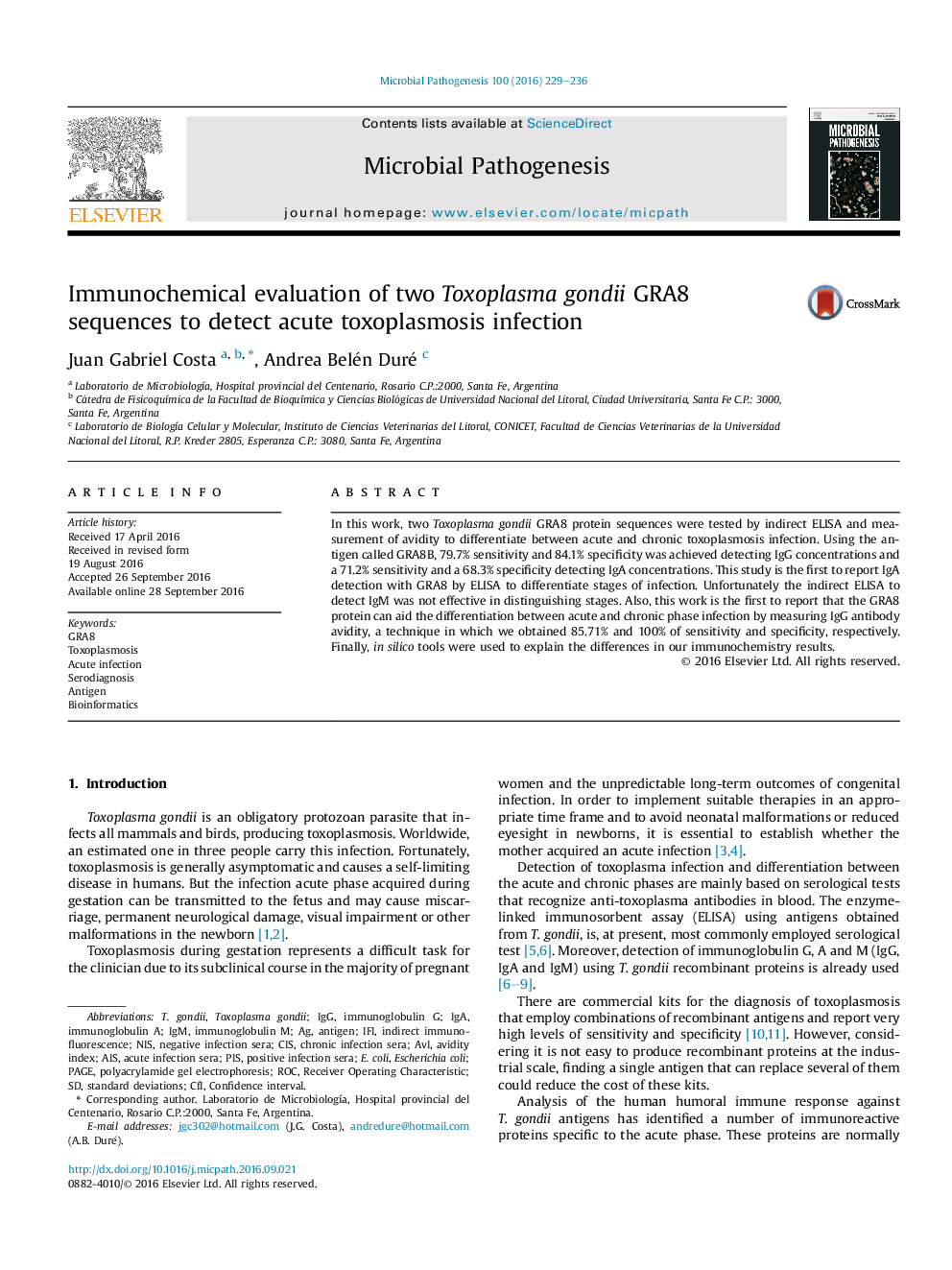| Article ID | Journal | Published Year | Pages | File Type |
|---|---|---|---|---|
| 8750028 | Microbial Pathogenesis | 2016 | 8 Pages |
Abstract
In this work, two Toxoplasma gondii GRA8 protein sequences were tested by indirect ELISA and measurement of avidity to differentiate between acute and chronic toxoplasmosis infection. Using the antigen called GRA8B, 79.7% sensitivity and 84.1% specificity was achieved detecting IgG concentrations and a 71.2% sensitivity and a 68.3% specificity detecting IgA concentrations. This study is the first to report IgA detection with GRA8 by ELISA to differentiate stages of infection. Unfortunately the indirect ELISA to detect IgM was not effective in distinguishing stages. Also, this work is the first to report that the GRA8 protein can aid the differentiation between acute and chronic phase infection by measuring IgG antibody avidity, a technique in which we obtained 85.71% and 100% of sensitivity and specificity, respectively. Finally, in silico tools were used to explain the differences in our immunochemistry results.
Keywords
IgMIgGAISROCCISCFIPAGEIFIAVIPISNiSEscherichia colipolyacrylamide gel electrophoresisstandard deviationsIndirect immunofluorescenceimmunoglobulin Aimmunoglobulin GIgAimmunoglobulin ME. coliBioinformaticsSerodiagnosisToxoplasma gondiiToxoplasmosisAvidity indexAcute infectionconfidence intervalAntigenreceiver operating characteristic
Related Topics
Life Sciences
Immunology and Microbiology
Microbiology
Authors
Juan Gabriel Costa, Andrea Belén Duré,
